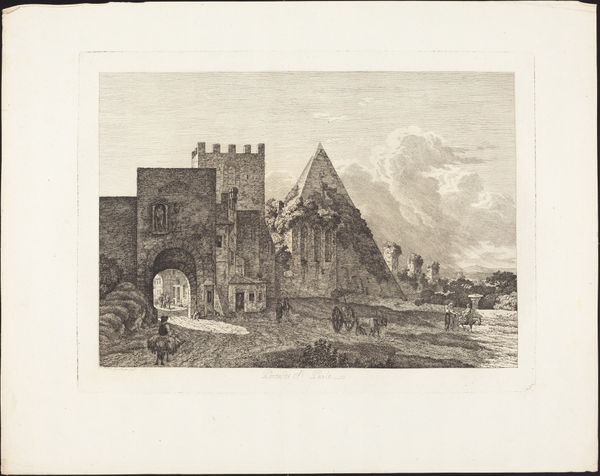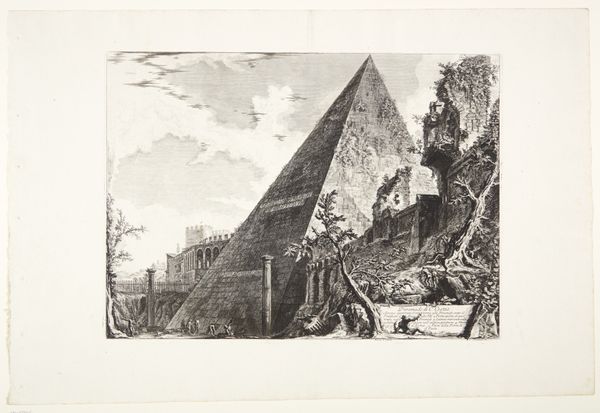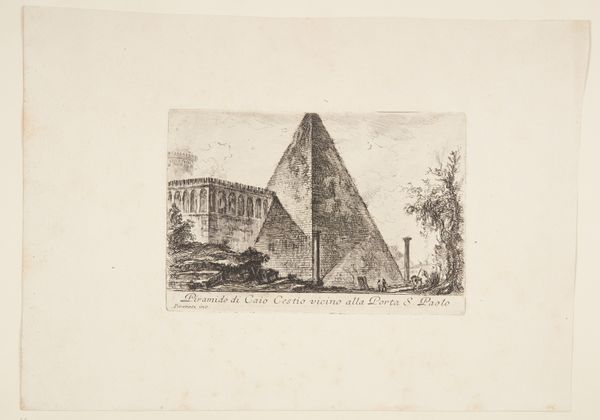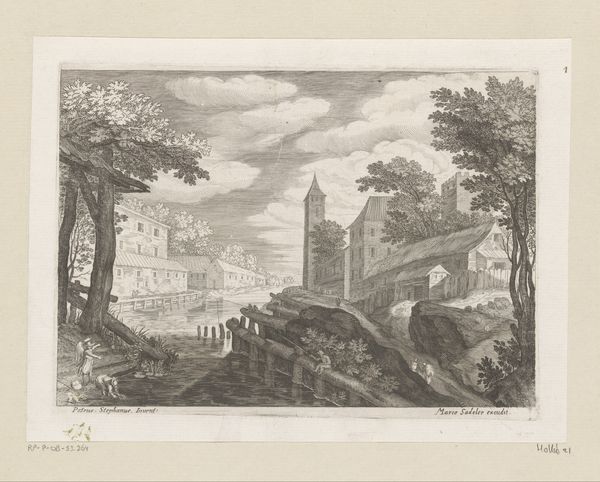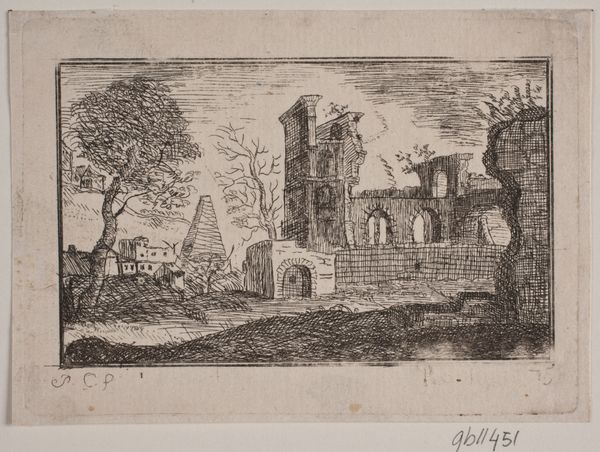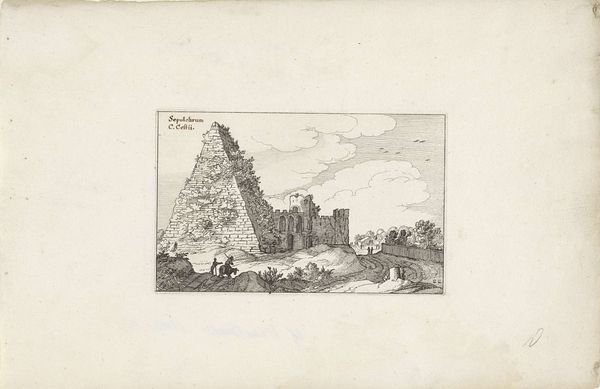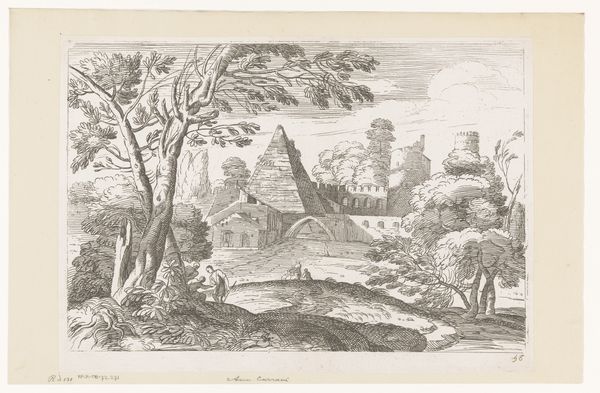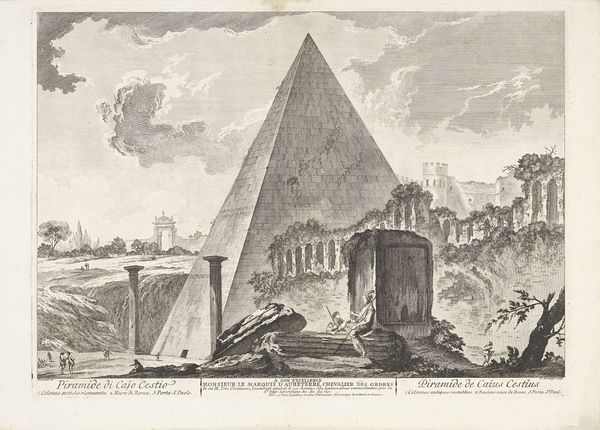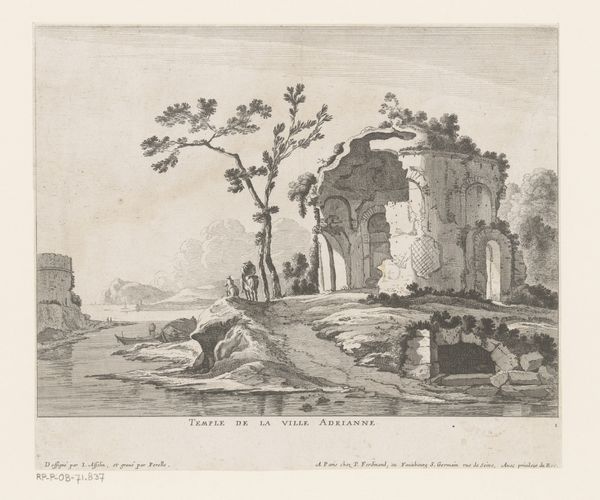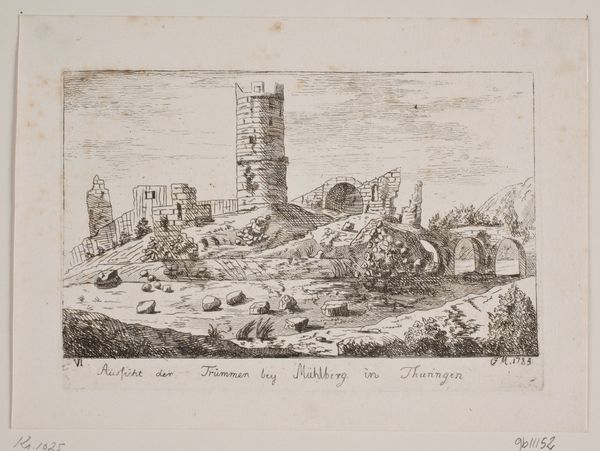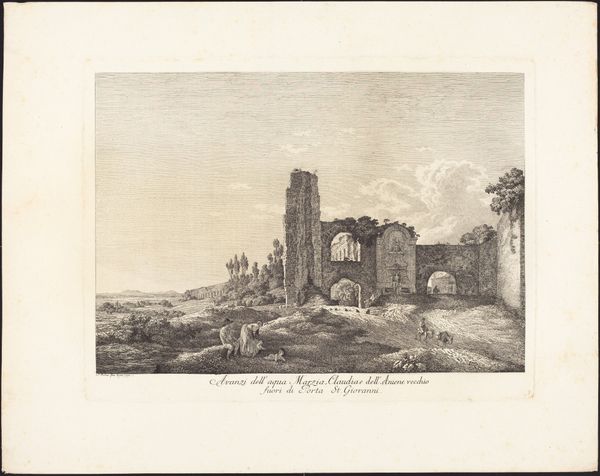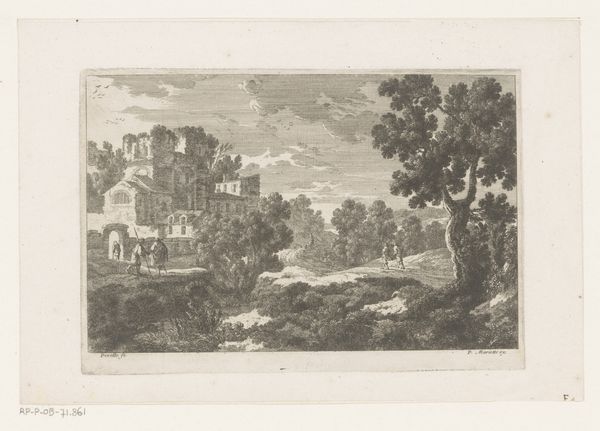
View of the Pyramid of Caius Cestius, with the Porta San Paolo to the left 1755
0:00
0:00
print, etching, engraving
#
neoclacissism
# print
#
etching
#
landscape
#
cityscape
#
history-painting
#
italian-renaissance
#
engraving
Dimensions: 404 mm (height) x 541 mm (width) (plademaal)
This is Giovanni Battista Piranesi's etching, depicting the Pyramid of Caius Cestius with the Porta San Paolo, capturing Rome's layered history. The pyramid, a form borrowed from ancient Egypt, stands as a potent symbol of eternity and the afterlife, themes deeply embedded in human consciousness. The pyramid form echoes across millennia, from the monumental structures of Giza to modern reinterpretations. Its geometric precision speaks to humanity's quest for order and permanence. The emotional weight of such a form is profound, tapping into our primal awareness of mortality and the desire to transcend it. Consider how this shape elicits feelings of awe and introspection, triggering memories of past civilizations. As we trace its journey through time, the pyramid's significance has shifted. What began as a sacred structure in one culture became a symbol of power, knowledge, and artistic ambition in another. In Piranesi's Rome, the pyramid serves as a poignant reminder of cultural inheritance, a testament to the enduring power of symbols.
Comments
No comments
Be the first to comment and join the conversation on the ultimate creative platform.
